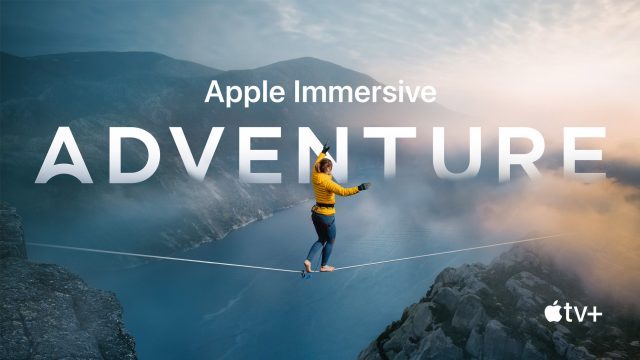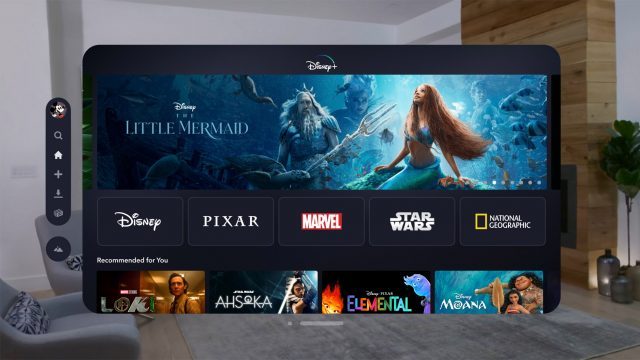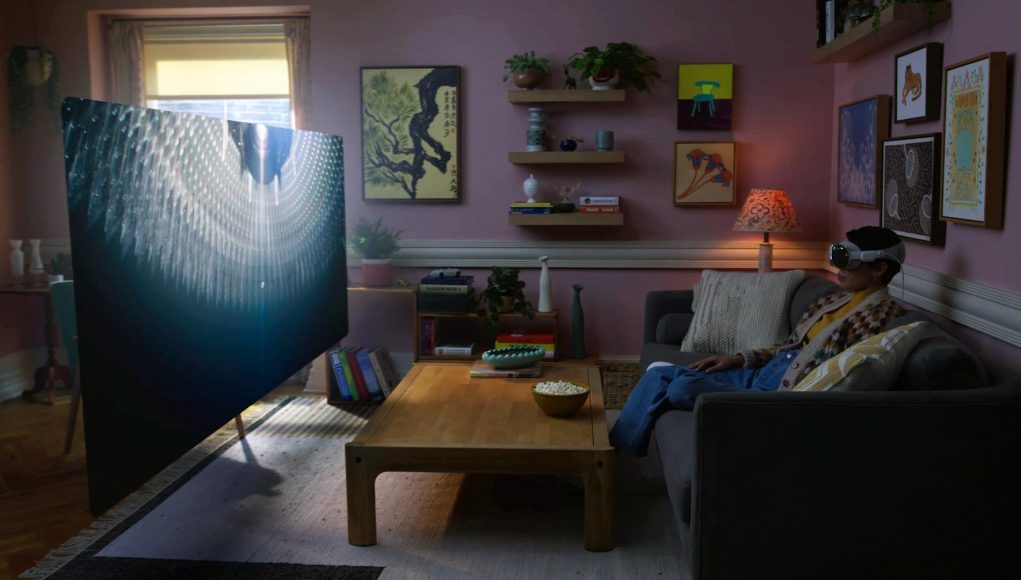As Apple Vision Pro pre-orders approach, the company is offering up new details on its headset. Vision Pro will include ‘Guest’ and ‘Travel’ modes, and users will have access to more than 150 3D movies across services.
Vision Pro pre-orders open this week on January 19th with the headset launching on February 2nd. Apple is taking the moment to sharpen its marketing message, and that message is clear: Vision Pro is being pitched hardest for passive media consumption.
Movie and TV on Vision Pro
To that end, the company is hyping up the viewing experience users can expect on launch day, including access to some 150 3D movies across Apple TV and other streaming apps like Disney+.

In fact, Apple tapped Walt Disney CEO Bob Iger to hype the headset as a new media platform.
“At Disney, we’re constantly searching for new ways to entertain, inform, and inspire by combining exceptional creativity with groundbreaking technology to create truly remarkable experiences. Apple Vision Pro is a revolutionary platform that will bring our fans closer to the characters and stories they love while immersing them more deeply in all that Disney has to offer. We’re proud to once again be partnering with Apple to bring extraordinary new Disney experiences to people around the world.”
In addition to 3D movies (the kind you’d see at a theater), Apple TV will also be home to ‘Apple Immersive Video’ experiences. These are “180-degree 3D 8K” videos with spatial audio, making you feel like you’re standing inside the video rather than watching it on a screen.

Apple described four of these upcoming immersive films:
Alicia Keys: Rehearsal Room offers a rare glimpse into the Grammy winner’s creative process with this intimate rehearsal session featuring renditions of her hits “No One,” “If I Ain’t Got You,” and “You Don’t Know My Name.” Users can also access these performances as a special EP exclusively on Apple Music when it debuts.
Adventure follows pioneering athletes as they take on awe-inspiring challenges in some of the world’s most sensational locations. In the first episode, Highlining, viewers step into thin air with highliner Faith Dickey as she takes on her biggest challenge yet: a daring traverse 3,000 feet above Norway’s breathtaking fjords.
Wild Life takes viewers up close and personal with some of the most charismatic creatures on the planet to uncover what makes them unique, featuring the experts who know them best. The first episode brings viewers into the world’s largest rhinoceros sanctuary where a former police captain has dedicated her life to rescuing, raising, and rewilding these gentle giants.
Prehistoric Planet Immersive: The award-winning Apple Original docuseries from Jon Favreau and the producers of Planet Earth returns with an immersive film that transports viewers into the daily lives of dinosaurs, and follows the struggles and triumphs of these majestic animals amid spectacular scenery. Prehistoric Planet Immersive whisks viewers along a rugged ocean coast where a pterosaur colony settles in for an afternoon nap, which proves to be anything but restful.
Beyond headset-only experiences like 3D and immersive films, Vision Pro can run existing flat iOS and iPad apps, which means many streaming services will work right out of the box. Apple officially confirms Disney+, ESPN, NBA, MLB, PGA Tour, Max, Discovery+, Amazon Prime Video, Paramount+, Peacock, Pluto TV, Tubi, Fubo, Crunchyroll, Red Bull TV, IMAX, TikTok, and MUBI.
Notably this list excludes Netflix, which Apple seems to address by saying “users can also watch popular online and streaming video using Safari and other browsers.” While Netflix has apps for iPhone and iPad, it doesn’t have an app for MacOS; there may be a similar reason why the company is balking on Vision Pro.
On the other hand, Disney is going a step further than just bringing its flat app to the headset.

Apple says the Vision Pro version of Disney+ will offer four immersive environments as backdrops for streaming. Those include “the Disney+ Theater, inspired by the historic El Capitan Theatre in Hollywood; the Scare Floor from Pixar’s Monsters Inc.; Marvel’s Avengers Tower overlooking downtown Manhattan; and the cockpit of Luke Skywalker’s landspeeder, facing a binary sunset on the planet Tatooine from the Star Wars galaxy.”
Although Apple is primarily highlighting passive media consumption on Vision Pro, there’s also real-time immersive experiences (dare we say, “virtual reality”) that will work on the headset. Apple is launching one called Encounter Dinosaurs which will put users face-to-face with life-sized dinos.
Developers can also build volumetric apps that float right in your room, though it’s unclear how many of these will be available at launch.
Apple also revealed the existence of both “Guest” mode and “Travel” mode on Vision Pro.
Vision Pro Guest Mode
Given that Vision Pro will link into the broader Apple ecosystem (meaning your headset will tap into your photos, text messages, emails, etc), Guest mode is a good idea for sharing the headset with others. Apple hasn’t offered many specifics other than saying that Guest mode will allow you to “share specific apps and experiences with family and friends, such as Photos or Safari.” Hopefully that means you can choose to include or exclude certain apps the Guest user can see.
And considering the headset’s ‘Optic ID’ feature (which uses an eye-scan to unlock the headset), it should be possible for Vision Pro to automatically enter Guest mode if someone other than the primary user puts it on.
Vision Pro Travel Mode

And then there’s “Travel” mode which is more of a mystery. Apple says it can be used to “stabilize visuals for use on planes.”
Most XR headsets have trouble in vehicles because the accelerations of the vehicle create a conflict between a headset’s inertial and visual sensors. While the frame of reference inside the vehicle (like a plane) looks static to the visual sensors, the headset can still sense the movement of the plane with inertial sensors. This often leads to the headset’s tracking system drifting significantly or giving up altogether.
Apple has shown on more than one occasion that Vision Pro will work on a plane, and presumably you’ll need to enable “Travel” mode to do so. As for what it might do—it may switch to a tracking mode based purely on visual sensors while ignoring inertial sensors. This would lead to less accurate tracking overall, but might be suitable enough if the assumed use-case is that the user is seated and won’t be doing any quick head movements.
Do you think passive media consumption will be a killer app on Vision Pro? Let us know in the comments below!







